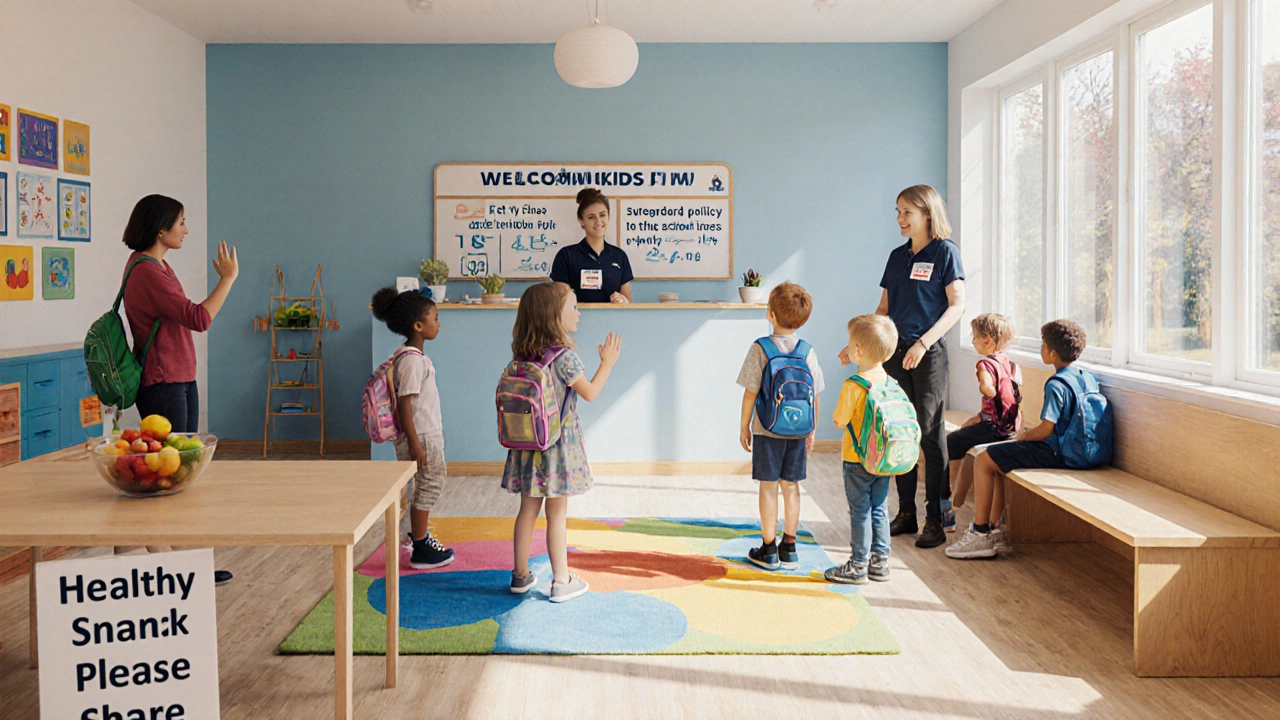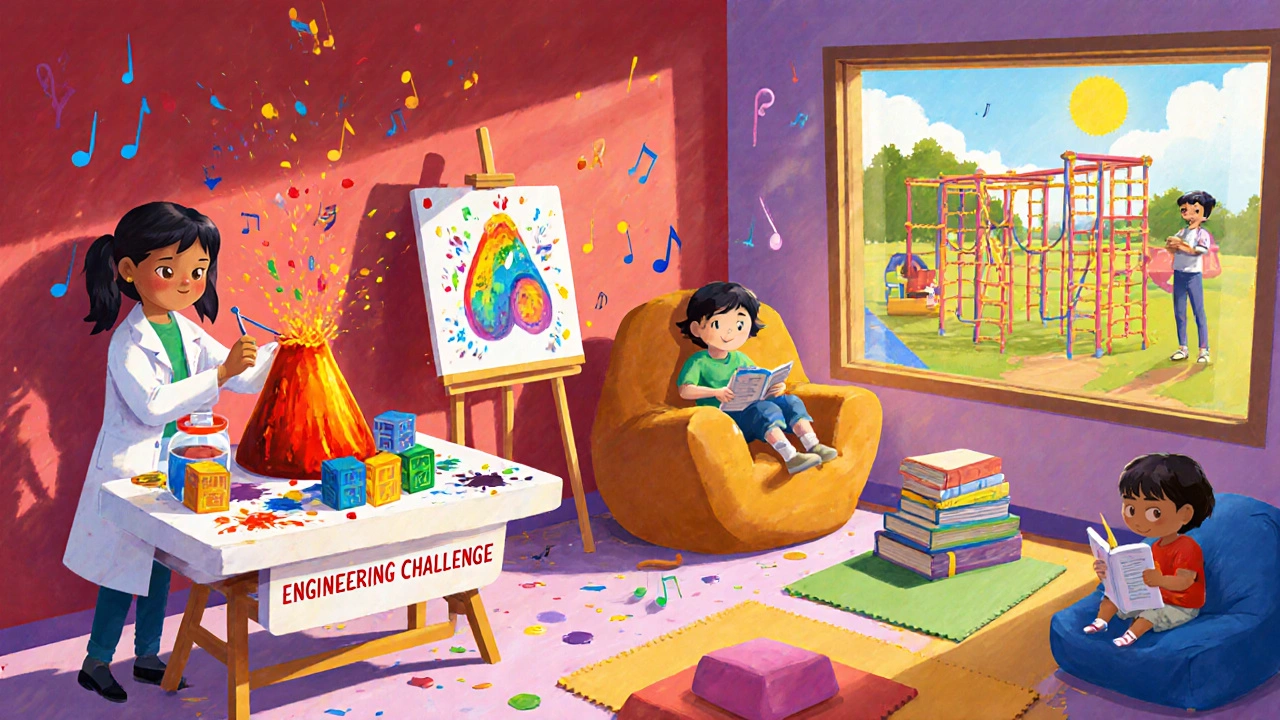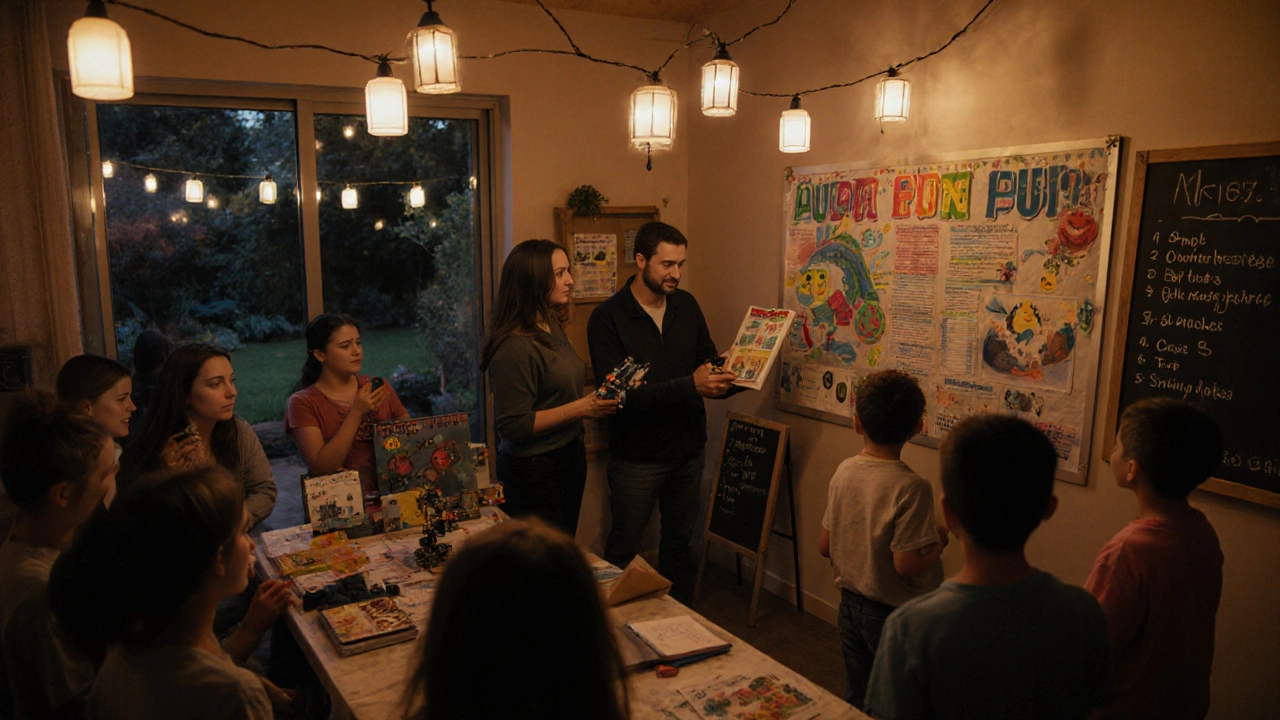How to Create a Great Kids Club: Essential Features & Tips
 Oct, 25 2025
Oct, 25 2025
Kids Club Safety & Quality Checker
Evaluate Your Kids Club
Check all criteria that apply to your kids club. This tool helps identify areas for improvement based on best practices.
Your club meets 0 out of 7 criteria
When parents look for a place where their children can learn, play, and feel safe after school, the quality of the Kids Club is the deciding factor. A good kids club isn’t just a drop‑in centre; it’s a carefully designed environment that supports growth, sparks curiosity, and respects each child’s individuality. Below you’ll find the pieces that turn an ordinary after‑school club into a thriving hub for your youngster.
Key Takeaways
- Safety and clear safeguarding policies are non‑negotiable.
- Qualified, enthusiastic staff make the biggest impact on learning.
- Play‑based, age‑appropriate programming keeps kids engaged.
- Strong parental and community links boost resources and trust.
- Regular feedback loops help the club evolve with children’s needs.
1. Defining a Good Kids Club
A Kids Club is an after‑school programme that provides supervised, structured activities for children aged 4‑12. Think of it as a mini‑school that blends learning with play. The difference between a good and a mediocre club lies in three core pillars: safety, learning value, and emotional connection.
2. Safety First: Safeguarding and Health Standards
Every parent’s first question is, “Is it safe?” That’s why a robust Safeguarding policy that covers background checks, child‑to‑adult ratios, and emergency procedures is essential. Look for clubs that follow the UK Department for Education’s guidance on child safety, conduct DBS checks on all staff, and have a visible health‑and‑safety manual.
- Staff‑to‑child ratio: ideally 1:8 for ages 4‑6 and 1:10 for ages 7‑12.
- First‑aid certified personnel on‑site at all times.
- Regular risk assessments of play areas, equipment, and food handling.
When a club can point to these measures, you know it’s taking protection seriously.
3. Qualified Staff and Their Role
Enthusiastic adults are the heartbeat of a great kids club. Look for staff with at least Level 2 Early Years qualifications or a background in child development. A Qualified Staff bring expertise in learning theory, behaviour management, and inclusive practice can adapt activities to different learning styles and keep the atmosphere positive.
Beyond credentials, good staff exhibit:
- Clear communication with children, using age‑appropriate language.
- Patience and the ability to de‑escalate conflicts.
- Creative problem‑solving - turning a rainy day into a science experiment.

4. Curriculum: Play‑Based Learning that Matters
Children learn best when they’re having fun. A well‑structured Play‑Based Learning framework blends games, art, and exploration with clear learning outcomes guarantees both enjoyment and skill development.
Key components include:
- STEM Exploration: simple experiments, building challenges, coding games (e.g., Scratch Junior).
- Creative Arts: music, drama, and crafts that nurture imagination.
- Physical Activity: daily outdoor play, obstacle courses, or dance to promote motor skills.
- Literacy Corner: storytime, word games, and reading circles to boost language.
Every session should have a learning objective-whether it’s mastering a new vocabulary word or understanding basic fractions.
5. Schedule and Activity Design
Kids thrive on routine, but variety keeps boredom at bay. A typical after‑school schedule looks like:
- 15‑minute arrival & snack - social time.
- 30‑minute focused activity (STEM or arts).
- 15‑minute outdoor play - physical release.
- 20‑minute free‑choice stations - children pick from reading, building, or music.
- 10‑minute cool‑down & reflection - children share what they learned.
Flexibility is key: clubs should adjust the mix based on weather, seasonal themes, and feedback.
6. Parental and Community Involvement
When families feel part of the club, trust grows. A good kids club keeps parents in the loop through weekly newsletters, digital photo galleries, and quarterly open‑house events. Volunteer opportunities-like helping with a gardening project-let parents contribute their skills.
Community partnerships enrich programming. Local libraries can supply books, sports clubs can coach a mini‑team, and museums may host field trips. These links broaden the club’s resources without major cost.

7. Measuring Success and Continuous Improvement
What gets measured gets improved. Effective clubs use simple metrics to gauge impact:
- Attendance rates - aim for >85% regular attendance.
- Child satisfaction surveys - quick smiley‑face stickers after each session.
- Skill checklists - track progress in reading level, teamwork, or problem‑solving.
- Parent feedback forms - quarterly to capture concerns and ideas.
Review these data points monthly, then tweak the schedule, training, or resources accordingly.
8. Quick Checklist for Parents Choosing a Kids Club
- Is there a clear Safeguarding policy and DBS‑checked staff?
- Do staff hold relevant qualifications in early years or child development?
- Does the programme balance structured learning with free play?
- Are there regular updates for parents (newsletters, photos, meetings)?
- Is the club accessible (location, transport, cost) and inclusive for children with additional needs?
When the answers line up, you’ve likely found a club that will nurture your child’s growth while giving you peace of mind.
Frequently Asked Questions
What age range does a typical kids club serve?
Most clubs cater to children aged 4‑12, splitting sessions into early years (4‑6) and primary (7‑12) groups to tailor activities appropriately.
How can I check a club’s safeguarding standards?
Ask to see the club’s safeguarding policy, staff DBS check records, child‑to‑staff ratios, and emergency drill documentation. Reputable clubs will provide these willingly.
Do I need to supply snacks or meals?
Most clubs include a short snack time and request parents to send a healthy snack. Some clubs partner with local caterers for a full meal program, especially for longer sessions.
How are fees usually structured?
Fees can be weekly, term‑based, or per‑term. Look for transparent pricing, discounts for siblings, and any extra charges for special trips.
Can children with special educational needs join?
A quality kids club should have inclusive policies, trained staff, and adaptable activities to support children with SEND. Ask the club about specific accommodations before enrolling.
By focusing on safety, skilled staff, engaging curriculum, and strong community ties, a kids club can become more than just an after‑school stop‑gap-it can be a launch pad for lifelong curiosity and confidence.
